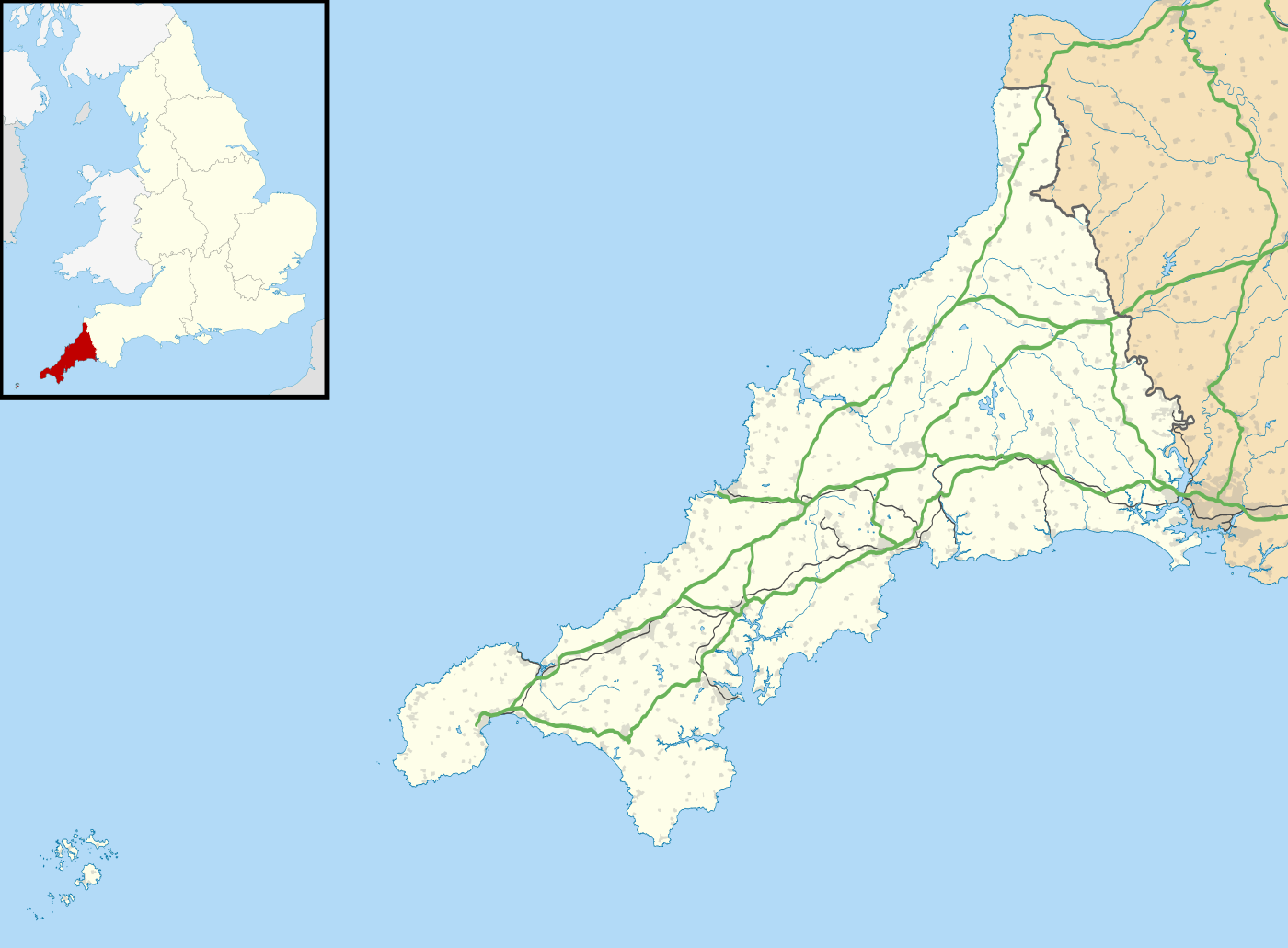Trematon Castle
| Trematon Castle | |
|---|---|
| Saltash, Cornwall | |
|
Trematon Castle | |
 Trematon Castle | |
| Coordinates | 50°24′02″N 4°14′16″W / 50.40044°N 4.23774°WCoordinates: 50°24′02″N 4°14′16″W / 50.40044°N 4.23774°W |
| Type | Shell keep with bailey |
| Site information | |
| Condition | Ruined |
Trematon Castle is situated near Saltash in Cornwall, England, United Kingdom. It was the caput of the feudal barony of Trematon. It is similar in style to the later Restormel Castle, with a 12th-century keep. Trematon Castle overlooks Plymouth Sound and was built probably by Robert, Count of Mortain on the ruins of an earlier Roman fort: it is a motte-and-bailey castle and dates from soon after the Norman conquest. It occupies a sentinel position one and a half miles south-east of Trematon village (grid reference SX41065801).
Description
Trematon Castle, like Restormel Castle, has a stone keep raised on an earlier motte. Although in ruins, much of the Norman walls remain standing, so that the original form of the Castle and keep are clear. The keep is oval and has walls 10 feet thick and 30 feet high.[1] The internal diameter is approximately 21 metres. A rectangular gatehouse, built in 1270, has two floors and a portcullis. Both are in good condition.
The military historian Sir Charles Oman said of the castle's situation "Trematon is high aloft, on one of the summits of the rather chaotic group of hill-tops which lie behind Saltash and its daring modern bridge."[2]
Within the castle courtyard stands a Georgian house built in about 1808. This has four reception rooms and six main bedrooms, as well as servants' quarters. Part of the original castle wall was demolished to give this house a view into the surrounding countryside.[1]
History
The castle was established here by Robert, Count of Mortain soon after the Norman Conquest.[2]
From the Conquest until 1270, the rights for the ferry from Saltash Passage on the Plymouth side of the River Tamar to Saltash belonged to the Valletort family. When Roger de Valletort sold Trematon Castle and manor to Richard Earl of Cornwall, the rent was paid to the Earl's bailiff. In the thirteenth century, this amounted to nearly seven pounds sterling.
The Castle has remained the property of the Earls and Dukes of Cornwall without interruption since 1270, when Earl Richard bought it for £300.[1]
When Sir Francis Drake returned from his circumnavigation voyage in 1580, he came into harbour in Plymouth, then slipped out to anchor behind St Nicholas Island until word came from Queen Elizabeth's Court for the treasures he had gathered to be stored in Trematon Castle.[3] The hoard consisted of gold, silver, and precious stones, mainly emeralds, the result of piracy from Spanish ships along the west coast of South America. Before being moved for storage in the Tower of London, the treasure was temporarily stored in the Golden Hinde.
In 1961 the Duchy of Cornwall advertised the Castle to be let on a full repairing lease for 21 years, with breaks, at a rent of £250 a year.[1] It subsequently became the home in Cornwall of Hugh Foot, Lord Caradon, and his son Paul Foot, a campaigning journalist, spent some of his youth there.[4]
Queen Elizabeth II visited the Castle on 25 July 1962 accompanied by the Lord Lieutenant of Cornwall, Sir Edward Bolitho, before driving to Fowey and embarking in the royal yacht Britannia.[5]
The castle is currently open to the public. Thursday, Friday and Saturday 11.00am - 4.30pm.
See also
References
- 1 2 3 4 'Tenant Sought for Trematon Castle' in The Times dated March 1st, 1961, Issue 55018, p. 7, col. F
- 1 2 Oman, Sir Charles William Chadwick (1926) Castles, p. 107
- ↑ Rowse, A. L. (1939) "History on the Hoe" in The Times dated November 11, 1939, p. 7. col. G
- ↑ Paul Foot obituary from Daily Telegraph newspaper
- ↑ 'Court Circular: H. M. Yacht Britannia' in The Times dated July 26, 1962, Issue 55453, p. 14, col. B
- Hammond, Muriel (1963) Castles of Britain; I: England. London: Ian Allan

